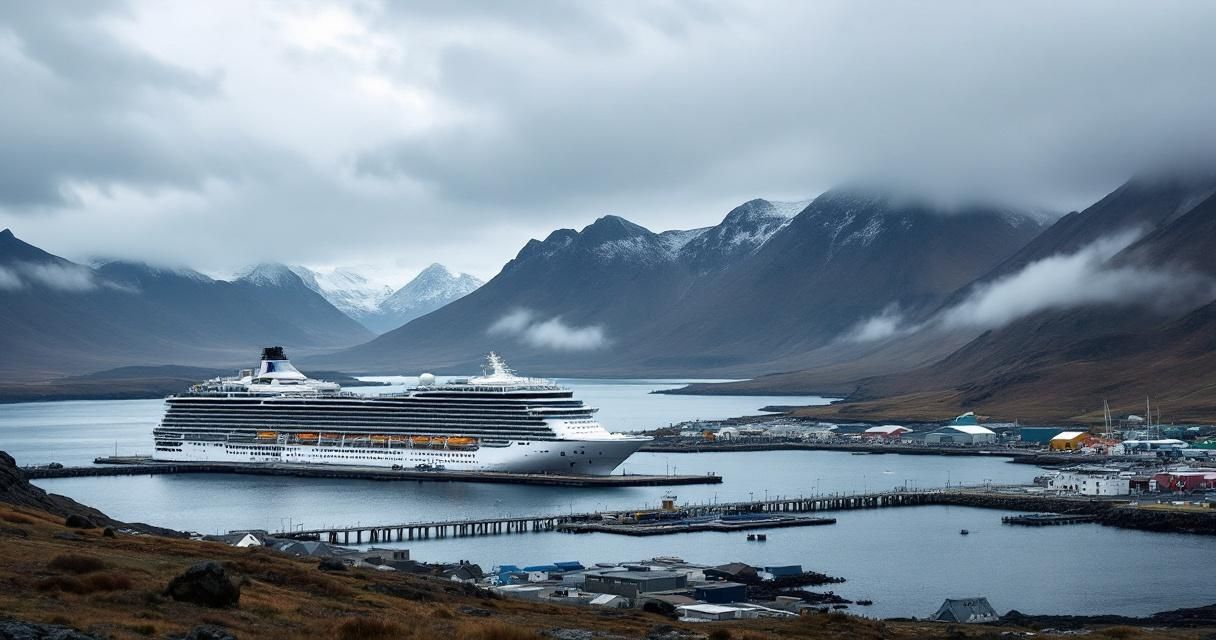Iceland's $18-Per-Day Tax Just Triggered a 50% Collapse in Cruise Bookings—And Rural Towns Are Paying the Price
Iceland's controversial infrastructure tax of approximately $18 per passenger has caused advance cruise bookings to plummet by more than 50% in some ports, with projections showing the decline extending through 2027.

Iceland may have just made one of the most expensive mistakes in cruise tourism history.
According to a new report submitted to Iceland’s Parliamentary Committee on Economic Affairs and Trade, the country’s controversial infrastructure tax—implemented on January 1, 2025—has caused advance cruise bookings to plummet by more than 50% in some ports. And the damage is far from over, with projections extending through 2027.
Cruise Industry News reports that the daily fee of 2,500 ISK (approximately $18 per passenger) is driving cruise lines away from Icelandic ports at an alarming rate, with rural communities bearing the brunt of the economic fallout.
The Numbers Tell a Grim Story
When Iceland introduced the infrastructure tax at the beginning of 2025, officials projected it would generate over $10 million annually for the state. What they apparently didn’t anticipate was the dramatic exodus that would follow.
“The situation is seriously bleak, especially for communities outside the capital,” said Sigurður Jökull Ólafsson, managing director of Cruise Iceland, the organization that compiled the data for the parliamentary report.
The statistics paint a troubling picture for Iceland’s tourism-dependent economy. Rural ports that once welcomed steady streams of cruise passengers are now watching their booking calendars empty out as cruise lines reconsider their itineraries.
Why Cruise Lines Are Jumping Ship
The issue isn’t just the tax itself—it’s how Iceland’s fee compares to neighboring destinations. According to the report, Iceland’s $18-per-day infrastructure charge is substantially higher than comparable fees in competing countries, making the destination less attractive from a cost perspective.
Francesco de Curtis, Port Operations Director for MSC Cruises, didn’t mince words about the industry’s response: the fee “could affect our assessment of the viability of Iceland in our future itineraries and plans.”
That’s corporate-speak for “we’re seriously considering taking our ships elsewhere.”
Rural Iceland Feels the Impact
Here’s what makes this situation particularly painful: the communities suffering most from the booking collapse aren’t the ones who pushed for the tax. Rural ports outside Reykjavik, which relied heavily on cruise tourism for economic vitality, are now facing an uncertain future as ships bypass their harbors entirely.
These small communities don’t have the diversified economies of Iceland’s capital. For many, cruise tourism represented a significant source of seasonal employment and business revenue. Now they’re watching that economic lifeline fray.
Too Little, Too Late?
Facing mounting pressure, Iceland’s government agreed to lower the 2026 head tax to approximately $16.50—a reduction of just $1.50 per passenger. Whether this modest adjustment will be enough to reverse the booking decline remains to be seen.
The problem is that the damage may already be done. Cruise itineraries are planned years in advance, and once cruise lines have committed to alternative routes, bringing them back to Iceland won’t be as simple as tweaking a tax rate.
What This Means for the Future of Cruise Taxation
Iceland’s situation offers a cautionary tale for destinations considering similar taxes. While the appeal of generating millions in annual revenue is obvious, the unintended consequences can be severe when the fees make a destination economically uncompetitive.
The cruise industry operates on thin margins and tight itineraries. When a destination becomes too expensive relative to alternatives, cruise lines have plenty of other options. Norway’s fjords, Greenland’s glaciers, and Scotland’s highlands all offer similar experiences without Iceland’s controversial fee structure.
The Bottom Line
Iceland’s infrastructure tax was designed to help fund tourism-related improvements and manage the impact of visitors. Instead, it’s achieving the opposite: fewer visitors, less revenue, and economic hardship for the communities that need cruise tourism most.
As advance bookings continue to decline through 2027, Iceland faces a critical decision: double down on the tax policy and accept the consequences, or acknowledge the mistake and make meaningful changes to win back the cruise industry’s confidence.
For now, the ships are sailing away—and they’re taking millions in economic impact with them.
Source: Cruise Industry News - “New Taxes Reportedly Pushing Cruise Ships Away from Iceland”
